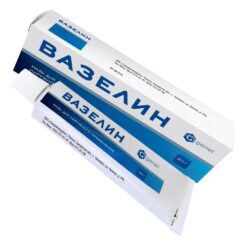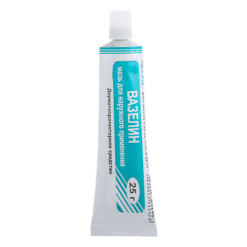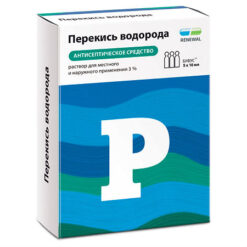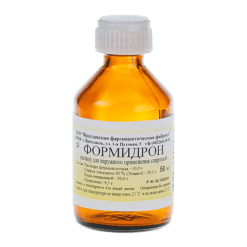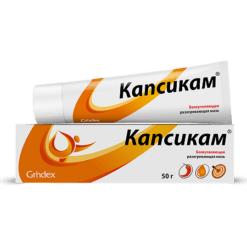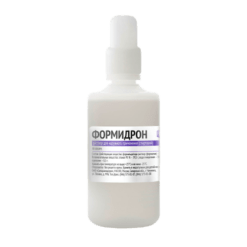No products in the cart.
Ebermin, ointment 30 g
€1.00
Out of stock
(E-mail when Stock is available)
Description treatment and prevention of radiation dermatitis (including superficial radiotherapy).
The drug is used in adults and children over 1 year of age for the treatment:
- surficial and deep skin burns of varying degrees;
- trophic ulcers (including. Chronic venous insufficiency, obliterating endarteritis, diabetes, rust);
- bedsores;
- durableNon-healing wounds (including residual limb wounds, wounds from autodermoplasty at lysis sites and between engrafted skin grafts, as well as residual wounds at donor sites);
- dermal integrity disorders in trauma, surgical and cosmetic interventions
- frostbites/Ulcers resulting from the administration of cytostatics;
- treatment and prevention of radiation (radiation) dermatitis (including superficial radiotherapy).
Indications
Indications
The drug is used in adults and children over 1 year of age for the treatment of:
superficial and deep skin burns of varying degrees;
trophic ulcers (including chronic venous insufficiency, obliterating endarteritis, diabetes mellitus, erysipelas);
bedsores;
long-term non-healing wounds (including wounds of the stump, wounds during autodermoplasty in areas of lysis and between surviving autologous skin flaps, as well as residual wounds at donor sites);
violations of skin integrity due to injuries, surgical and cosmetic interventions;
frostbite;
ulcers developing during the administration of cytostatics;
treatment and prevention of radiation (radiation) dermatitis (including during superficial radiotherapy).
Pharmacological effect
Pharmacological effect
ATC code: DO3AX: Other agents promoting scarring.
Pharmacological group: Agents that improve tissue regeneration for local use.
Pharmacological (immunobiological) actions:
Recombinant human epidermal growth factor (rhEGF) is a highly purified peptide. It is produced by a strain of yeast Saccharomyces Cerevisiae, into whose genome the gene for human epidermal growth factor has been introduced using genetic engineering methods. rhEGF, obtained on the basis of recombinant DNA technology, is identical in its mechanism of action to the endogenous epidermal growth factor produced in the body.
1. Ebermin, containing rhEGF and silver sulfadiazine as active substances, has a complex wound-healing and bactericidal effect.
2. rhEGF stimulates the migration and proliferation of fibroblasts, keratinocytes, endothelial and other cells actively involved in wound healing, promoting epithelization, scarring and restoration of tissue elasticity.
3. Silver sulfadiazine has a wide spectrum of antimicrobial action; it is active against gram-positive and gram-negative bacteria, fungi of the genus Candida and dermatophytes.
4. The hydrophilic base of the ointment provides a moderate dehydrating effect, reduces pain, creates and maintains the necessary therapeutic concentrations of active substances in the lesion. Ebermin has a cosmetic effect, provides scar aesthetics by normalizing the orientation and maturation of collagen fibers, preventing pathological scarring.
Pharmacokinetics
Special instructions
Special instructions
Use with caution in case of congenital deficiency of glucose-6-phosphate dehydrogenase, insufficiency of liver and kidney function.
With the open (bandage-free) method of treatment, direct exposure to sunlight on the area where the ointment is applied should be avoided.
Composition
Composition
100 g ointment contains:
Active substances:
Recombinant human epidermal growth factor (rhEGF) 0.001 g and silver sulfadiazine 1.0 g
Excipients (hydrophilic filler):
Stearic acid 18.00 g, potassium carbonate 0.50 g, methyl parahydroxybenzoate 0.18 g, propyl parahydroxybenzoate 0.02 g, glycerol 5.00 g and purified water. required
Pregnancy
Pregnancy
Ebermin has not been sufficiently studied regarding the effects on the fetus or infants, therefore its use is not recommended during pregnancy and lactation. If a pregnant or breastfeeding woman has a lesion that can be treated with Ebermin, the doctor must determine the risk-benefit ratio and decide on its use.
Contraindications
Contraindications
Hypersensitivity to sulfonamides and components of the drug.
Pregnancy and lactation.
Children’s age up to 1 year.
Should not be used on anatomical areas with active tumor lesions or to stimulate scarring in areas of surgical excision of tumors.
Side Effects
Side Effects
The drug is well tolerated. In rare cases, it is possible to develop:
allergic reactions characteristic of sulfonamide drugs and drugs containing silver;
the appearance of a burning sensation, pain, tightness and discomfort in the area where the ointment is applied (usually goes away on its own within 5-10 minutes after applying the bandage).
Interaction
Interaction
No incompatibility or interaction with other drugs was noted.
Overdose
Overdose
There have been no cases of overdose.
Recommendations for use
Recommendations for use
Ebermin can be used at all stages of the wound process.
Beforehand, standard surgical treatment of the wound is carried out using antiseptic solutions in case of infection. After drying, a layer of ointment of about 1-2 mm is applied to the wound surface. In the closed treatment method, sterile gauze pads or occlusive film coverings are placed on top (healing in a moist environment). In some cases, for example, with superficial shallow (I-II degree) and partially deep (III degree) burns, it is possible to use ointment with atraumatic mesh wound coverings.
With the wet healing method, as well as severe exudation, it is recommended to apply the ointment once a day. With moderate or scant exudation, the ointment can be applied once every 2 days. If the dressing sticks to the wound and to prevent unwanted drying of the wound surface, it is recommended to moisten the napkin applied over the ointment with a sterile 0.9% sodium chloride solution or antiseptic solutions. With the open (bandageless) method of treatment, the ointment is applied 1-3 times a day.
Cleaning the wound before repeated applications of the ointment is carried out using a sterile 0.9% sodium chloride solution or antiseptic solutions. The procedure is performed carefully, avoiding injury to the resulting granulation tissue and growing epithelium when removing ointment residues.
Treatment is continued until the wound is epithelialized or is ready for plastic closure with a skin flap.
To prevent radiation dermatitis, a 1 mm layer of ointment is applied to the irradiated area of skin without removing it from the application site for 6-8 hours after irradiation. The use of the ointment is continued daily throughout the course of radiotherapy and is not interrupted in case of forced skipping of any of the radiation procedures.
Storage conditions
Storage conditions
Store at a temperature of 15° to 25°C, protected from light and out of the reach of children.
Shelf life
Shelf life
2 years
Manufacturer
Manufacturer
Center for Genetic Engineering and Biotechnology, Cuba
Additional information
| Shelf life | 2 years |
|---|---|
| Conditions of storage | Store at 15 ° to 25 ° C in a light-protected place out of the reach of children. |
| Manufacturer | Center for Genetic Engineering and Biotechnology, Cuba |
| Medication form | topical ointment |
| Brand | Center for Genetic Engineering and Biotechnology |
Related products
Buy Ebermin, ointment 30 g with delivery to USA, UK, Europe and over 120 other countries.




